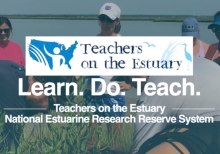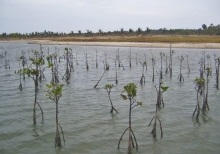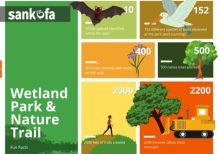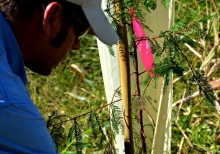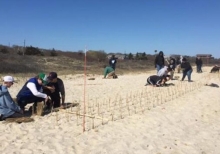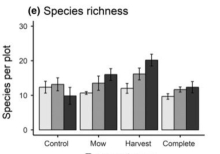Sri Lanka: Learning From Failure-Mixed Results Of Post- Tsunami Mangrove Restoration
In 2004, the devastating Indian Ocean tsunami invigorated the Sri Lankan government and people to turn their attention to restoring the country's mangrove stands to prevent such catastrophic damage from future disasters. It has an area of approximately square 65,610km with a coastline of about 1,620km on the Indian Ocean. Mangrove restoration projects were launched in Sri Lanka covering over 2,000 hectares. However, over 80% of these projects failed. Kondikara et al. 2017 conducted an assessment of the success of 23 mangrove restoration projects implemented following the 2004 tsunami.
Sankofa Wetland Park And Nature Trail
The Sankofa Wetland Park and Nature Trail is a long-term recovery project that aims to improve protection from hurricanes and flooding in the Lower Ninth Ward. The Sankofa Wetland Park was developed during 2017 in partnership with Sewerage and Water Board and the City of New Orleans. Sankofa worked with a team of wetland ecologists and landscape architects to transform this area into a space for environmental education, relaxation, and recreation for all to enjoy.
Restoring San Francisco Bay's Wetlands
The San Francisco Bay's wetlands are disappearing at an alarming rate due to encroaching development, leaving the local ecosystem at risk. Moreover, the wetlands can store as much carbon as a tropical rainforest, an invaluable asset in the effort to slow global warming. Sonia Aronson of the PBS NewsHour Student Reporting Labs takes a look at a new and contentious proposed tax to save the bay.
Restoration Ecology
Ecological restoration aims to recreate, initiate, or accelerate the recovery of an ecosystem that has been disturbed. Disturbances are environmental changes that alter ecosystem structure and function. Common disturbances include logging, damming rivers, intense grazing, hurricanes, floods, and fires. Restoration activities may be designed to replicate a pre-disturbance ecosystem or to create a new ecosystem where it had not previously occurred. Restoration ecology is the scientific study of repairing disturbed ecosystems through human intervention.
Resoration Spotlight: Urban Wetland
Laura Bankey, Director of Conservation at the National Aquarium in Baltimore, guides us through the Fort McHenry Wetland. This 7-acre protected marsh was created in the 1980's as mitigation for the Fort McHenry Tunnel, and it provides critical habitat for wildlife in this heavily industrialized portion of the Chesapeake Bay. However, trash and debris are a major problem that must be managed through the help of community volunteers.
Officials Call Bayou St. John A Flood Protection Liability, But New Orleanians Call It A 'Treasure'
The mouth of Bayou St. John, for a cast of officials from the Army Corps of Engineers and Orleans Levee District, represents more than anything a point of vulnerability. Their priority is simple: keep storm surge from Lake Pontchartrain at bay, and prevent the transformation of a natural waterway into a highway for delivering floodwater to New Orleans' heart. But for an increasingly vocal alliance of New Orleanians, the junction of the bayou and the vast lake represents much more than a flood protection issue.
Nourishing Ecology And Society With Beachgrass
While it may seem like a straightforward planting project, this restoration highlights the connections between human society and the ecologies we depend on. The tribe's millennia-long relationship with the land inspired members to join the volunteer crews each year. Every October, they mark the cranberry harvest with a festival celebrating the significance of their entanglement with the land. The planting days have built relationships between the tribe and other civic organizations.
Lobsterville Beachgrass Restoration
Lobsterville Beach Grass Restoration - The Natural Resource Department of the Wampanoag Tribe of Aquinnah successfully restores an area of beach using beach grass.
Invasive Species Removal Increases Species And Phylogenetic Diversity Of Wetland Plant Communities
Plant invasions result in biodiversity losses and altered ecological functions, though quantifying loss of multiple ecosystem functions presents a research challenge. Plant phylogenetic diversity correlates with a range of ecosystem functions and can be used as a proxy for ecosystem multifunctionality. Laurentian Great Lakes coastal wetlands are ideal systems for testing invasive species management effects because they support diverse biological communities, provide numerous ecosystem services, and are increasingly dominated by invasive macrophytes.
Pagination
- Previous page
- Page 3
- Next page
